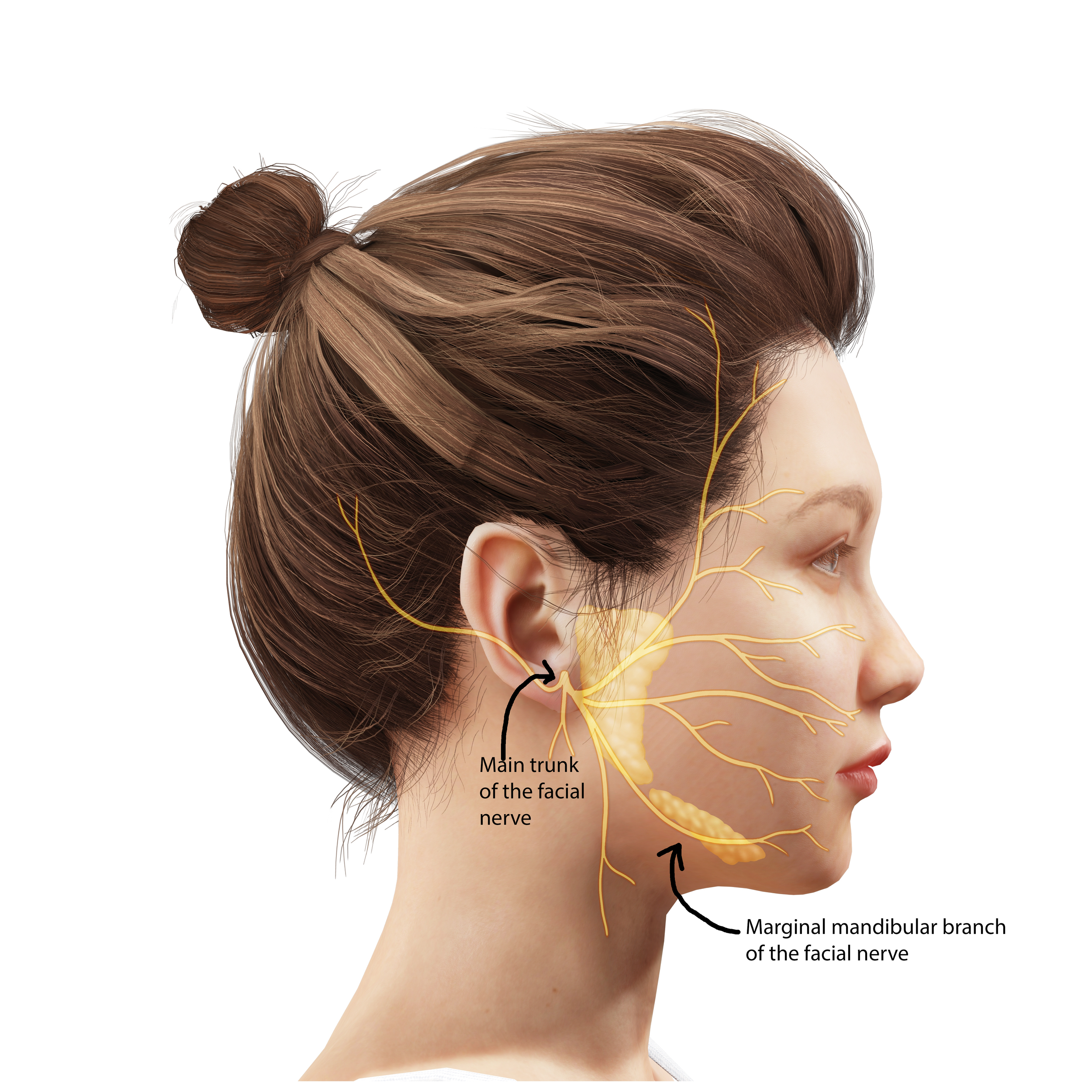Conditions: weakness of the lower lip
(marginal mandibular neuropathy)
What is the marginal mandibular nerve?
The marginal mandibular nerve is a branch of the facial nerve. There is a right and a left facial nerve, each with branches that connect to the seventeen muscles of facial expression. That is, the facial nerve moves the face, which is necessary for expression as well as for speaking, blinking, and eating. The marginal mandibular branch is one branch of the facial nerve that controls muscles that move the lower lip.
This branch of the facial nerve is known among surgeons for being variable in its location and prone to weakness with minimal manipulation. It is a long, wispy branch that is susceptible to injury with manipulation.
Why is the marginal mandibular nerve affected by surgery?
Several surgical operations require dissection in proximity to the marginal mandibular branch of the facial nerve. This nerve branch is long, narrow, and variable in its anatomic location, all reasons that it may be injured during dissection. In parotidectomy, the facial nerve is traced out in its branches to separate tumor from the nerve. In surgery below the jaw, the area of the marginal mandibular branch is needed for access—such as for access to the submandibular gland, lymph nodes, or the hypoglossal nerve. In facelift (rhytidectomy) surgery, the tissue plane requiring release is in contact with the marginal mandibular branch as well as other branches of the facial nerve.
What are the symptoms of marginal mandibular neuropathy?
When the marginal mandibular branch of a facial nerve is not functioning fully, the muscles it innervates do not contract properly. These muscles normally work by lowering or everting the lower lip (as in someone smiling in a way that shows the lower lips or someone puckering their lips). When the nerve is not functioning properly, these muscles do not respond well and the smile may be asymmetric, the lips may not close tightly, and the lower lip may have a tendency to find its way between the upper and lower teeth more than usual. Although people often learn ways to compensate, early after developing weakness of the marginal mandibular branch, people tend to have some difficulty eating and drinking, with some dribbling or spillage onto the chin.
What precautions are necessary with marginal mandibular neuropathy?
Even if a weakness of the marginal mandibular nerve persists, one tends to compensate over time. Until compensation is complete, one may need to be careful not to bite the lower lip if it finds its way between the upper and lower teeth. Also, dabbing the mouth and chin with a napkin may be necessary more than usual during meals.
HOw is marginal mandibular neuropathy prevented?
While the course of an individual’s facial nerve branches, including the marginal mandibular nerve is unique, surgeons know the anatomy and make every effort to avoid any injury to the nerve during dissection. Despite all efforts, sometimes marginal mandibular nerve weakness is unavoidable.
How much will marginal mandibular neuropathy bother someone?
Marginal mandibular nerve weakness may resolve after a period of time (sometimes up to a year), but even when it does not resolve, the degree of bother to an individual tends to become less over time as compensation develops.
Does marginal mandibular neuropathy improve over time?
When the marginal mandibular branch of the facial nerve is partially functional after an injury, it has a good chance of regaining strength over time, though it may take up to a year. If the marginal mandibular branch is completely paralyzed (non-functional) after the injury, the nerve may or may not regain activity. Roughly speaking, recovery may continue to take place over one year from the initial injury.


